Bruce Pollock
Complex things are made of basic elements. In nature, biological organisms are built from cells, mountains from rocks, rocks from molecules, and molecules from atoms, ad infinitum. The complex digitalized image that you are looking at as you read this is composed of tiny pixels of light.
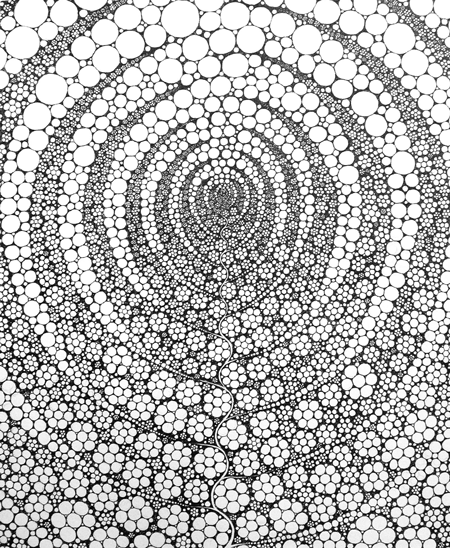
Meristem, 2011, pencil and ink on paper, 12.5 x 10 inches. Image courtesy of artist.
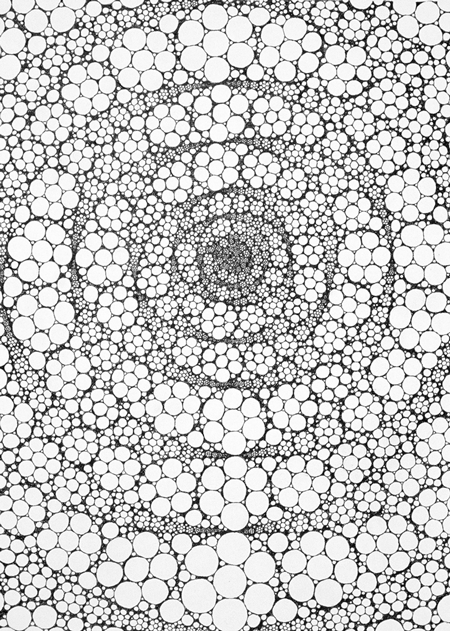
Rose1, 2010, pencil and ink on paper, 13.5 x 10 inches. Image courtesy of artist.

Radial1, 2010, pencil and ink on paper, 14 x 11 inches. Image courtesy of artist.
As new technologies are devised to scientifically look into the structure of nature, new spaces have emerged. A body once deemed solid and impenetrable can now be electronically scanned to reveal a cancerous cell. Oil deposits can be located deep in the earth by using hydrophones or seismometers. And we can peer through the cloud cover on distant planets with radio telescopes. Our present era is marked by the exploration of spaces great and small beyond the scope of our normal vision.

Seed, 2011, pencil and ink on paper, 13 x 10.5 inches. Image courtesy of artist.
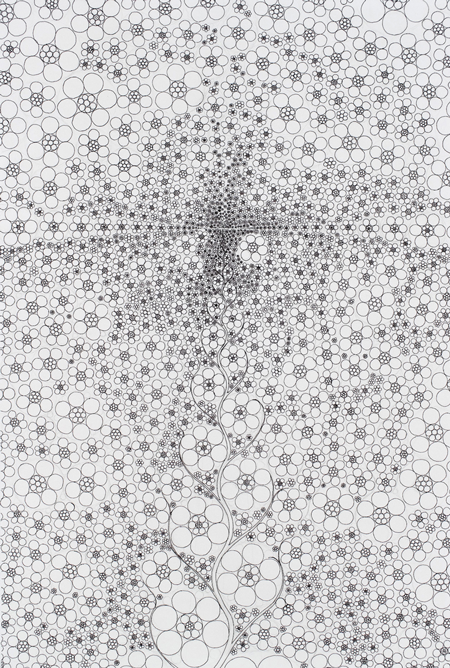
Rapture, 2010, pencil and ink on paper, 15 x 10 inches. Image courtesy of artist.

Netpath, 2009, pencil and ink on paper, 13.5 x10.5 inches. Image courtesy of artist.
The process of drawing allows me to enter the micro and macro dimensions of nature where forms and forces are constantly interacting to create new forms. I employ a variety of simple geometric formulas that I devise that determines the rate of change of individual shapes (circles and polygons) in relation to each other and to the overall drawing. The constraints these formulas impose limit my action and simultaneously free my imagination to create new images that could not be achieved by following my artistic instinct alone.
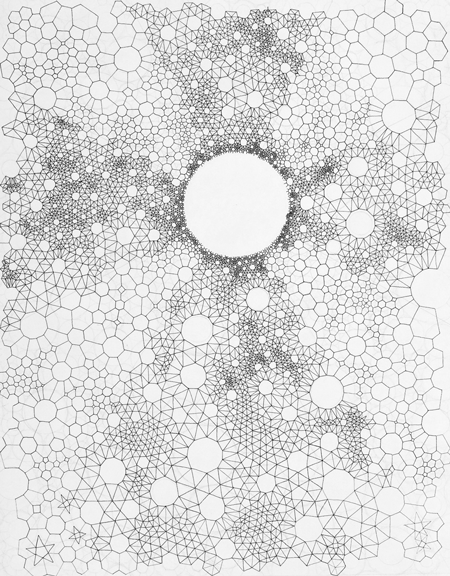
Pore1, 2010, pencil and ink on paper, 14 x11 inches. Image courtesy of artist.
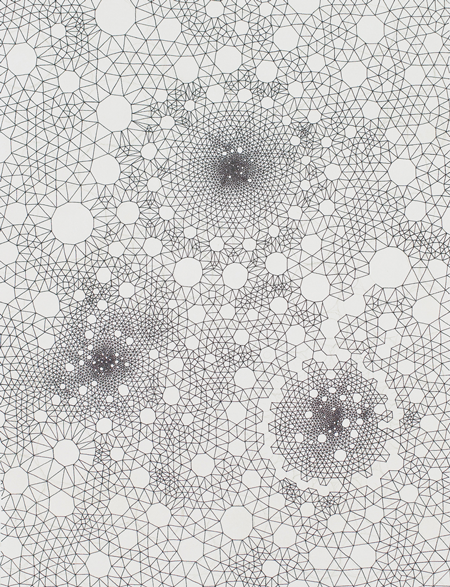
Trinity, 2011, pencil and ink on paper, 13 x 10 inches. Image courtesy of artist.
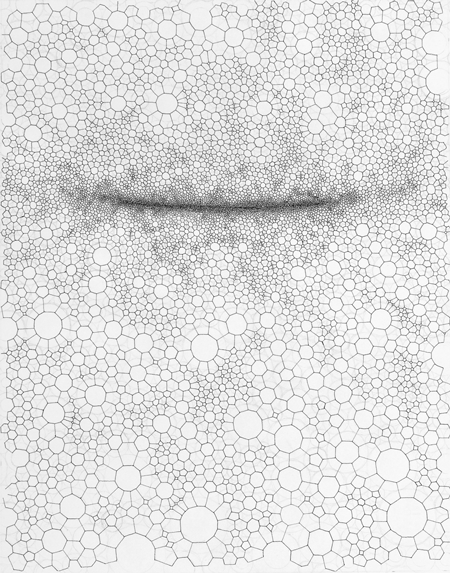
Wink, 2010, pencil and ink on paper, 14 x 11 inches. Image courtesy of artist.
The intention of my work is to overcome the separation of art and nature not by copying natural forms but by understanding the forces at play beneath its surface. I strive to provide new images that expand our ability to see and to understand our changing relationship to nature.
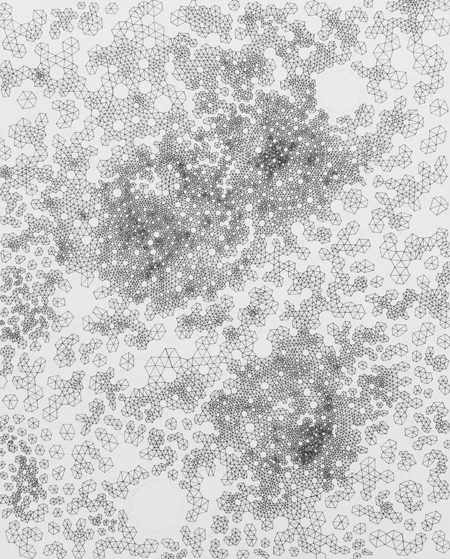
Polynet6, 2011, pencil and ink on paper, 12.5 x 10 inches. Image courtesy of artist.
Bruce Pollock exhibits his abstract paintings and drawings throughout the US and most recently at the Museum of the Central Academy of the Fine Arts, Beijing, China. He has had numerous solo exhibitions in New York City, Chicago, Los Angeles, Philadelphia and Shenzhen, China and Vancouver, Canada. Pollock has received numerous grants and awards including the Pennsylvania Council on the Arts, the Philadelphia Museum of Art, the Pollock-Krasner Foundation, MacDowell Colony Fellowship and Ballinglen Arts Foundation, Ballinglen, Ireland. Pollock’s works are in numerous private, corporate, and public collections including The Philadelphia Museum of Art, Pennsylvania Academy of Fine Art, The Federal Reserve Bank, and the Pennsylvania Convention Center. Bruce Pollock received his MFA in Painting from the Tyler School of Art, where he studied painting in Rome, Italy through Temple University Abroad Program. He has a BFA from the Cleveland Institute of Art. Currently, he is an Assistant Professor and Studio Head of Painting at Drexel University in Philadelphia, Pennsylvania. www.brucepollock.com